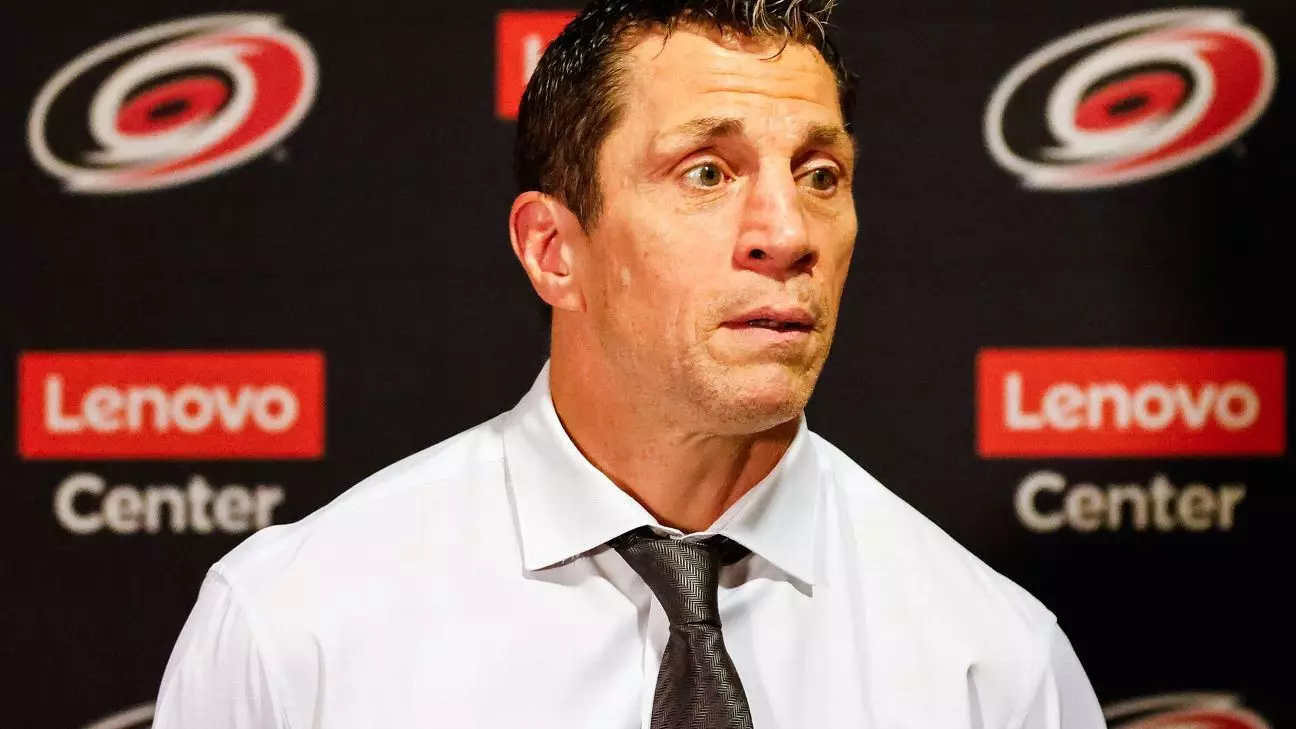In the world of professional hockey, few rituals hold as much significance as the post-series handshake line. This longstanding tradition is a testament to the respect and sportsmanship exhibited by players after intense playoff battles. The ritual is not merely a formality; it symbolizes the acknowledgment of the effort, pain, and camaraderie that exists between competitors who have given their all on the ice. However, this cherished practice is being tested by the evolving ideologies of coaches regarding its relevance to modern hockey.
A New Perspective on Tradition
The recent exchange between Carolina Hurricanes coach Rod Brind’Amour and Florida Panthers coach Paul Maurice sheds light on this ideological rift. Maurice’s push to alter the handshake line tradition has raised eyebrows and sparked discussions about the evolving nature of sportsmanship. Maurice believes that the focus should rest solely on the players, and so, Wednesday, during a crucial playoff clash that marked the end for the Hurricanes, he asked Brind’Amour to forgo the handshake. He argued that the line has become bloated with unnecessary personnel, stating, “there’s this long list of people in suits and track suits.”
Yet, for Brind’Amour, the act of shaking hands after a loss is deeply significant. He perceives the handshake as a necessary component of “gracious losing” and a moment of closure after a hard-fought battle. This distinction offers an insight into how coaches view their roles in the fabric of the sport. While Maurice aims to refocus the spotlight on the athletes, Brind’Amour sees his place not merely as a strategist but as a custodian of the game’s rich traditions.
The Significance of Shared Moments
Brind’Amour’s comments underscore a profound sentiment that resonates among many coaches: the handshake line represents more than a mere acknowledgment of the end of a season; it signifies the mutual respect earned through competition. “I’ve had some pretty impactful memories and moments in that line as a coach,” he reflected, emphasizing the emotional connections formed through these rituals. The handshake provides an opportunity for coaches to connect with former players, friends, and rivals alike, reinforcing the communal spirit that hockey embodies.
The very idea of excluding coaches and staff from this ritual raises questions about the nature of competition itself. Does emphasizing player-centric acknowledgments diminish the hard work, dedication, and sacrifice that go into a season? By acknowledging contributions from the broader organizational structure, does it still honor the following principle of sportsmanship? This debate invites a reevaluation of how success and respect are perceived within the sport.
Contrasting Views: Establishing New Norms
Maurice, who embarked on his coaching career with the Hartford Whalers, asserts that there were periods when staff did not participate in the handshake line at all. His perspective revolves around the idea of preserving the purity of competitive spirit—emphasizing that affection and respect amongst players can exist even amidst fierce rivalries. “This was nasty out there. And yet they shake hands like that. That’s special,” he asserts, emphasizing the dignity inherent in this seemingly simple gesture.
This contrasts sharply with Brind’Amour’s take, which acknowledges the connection inherent in these moments—an affirmation that respect extends beyond the players themselves. While Maurice’s intentions might be rooted in a desire to modernize the tradition, Brind’Amour’s stance reflects a longing for continuity and respect, not just for the players but for everyone who contributes to the game.
Implications for Future Seasons
As the NHL continues to evolve, the nuances between these perspectives provide fertile ground for important discussions—both within the league and among fans. There is potential for fresh debates around the essence of sportsmanship and the implications of changing such integral traditions. While Maurice embarks on his campaign to shift focus, Brind’Amour’s willingness to steer back to conventional practices embodies the significance many still associate with the handshake line.
Such dialogues may serve to bridge the gap between tradition and modern eligibility in hockey. The stakes can influence not just future playoff series but also the way we define respect, legacy, and integrity in a league that thrives on passion and valor. The respect bestowed upon competitors must persist, and perhaps the handshake line continues to serve as a pivotal means of articulating this ethos—no matter how the tides of tradition may shift.


Leave a Reply